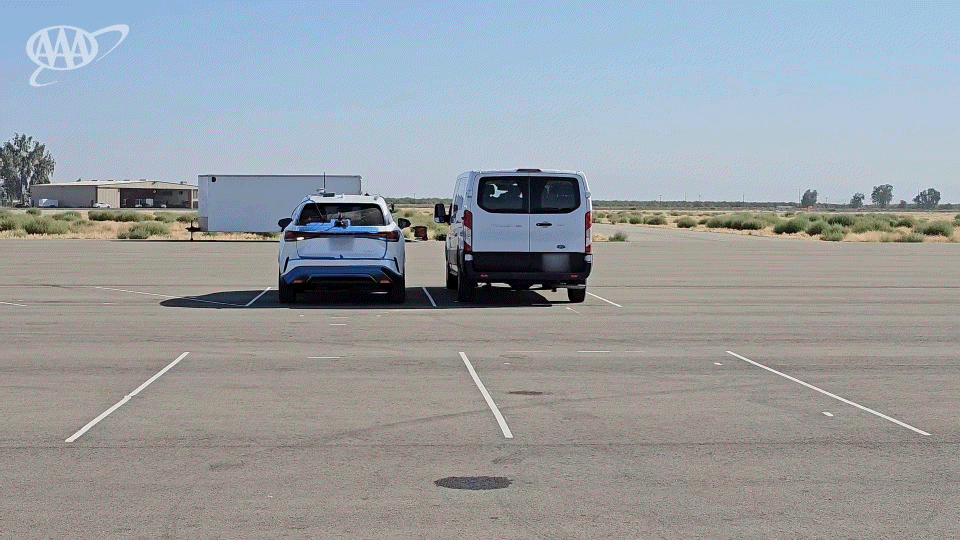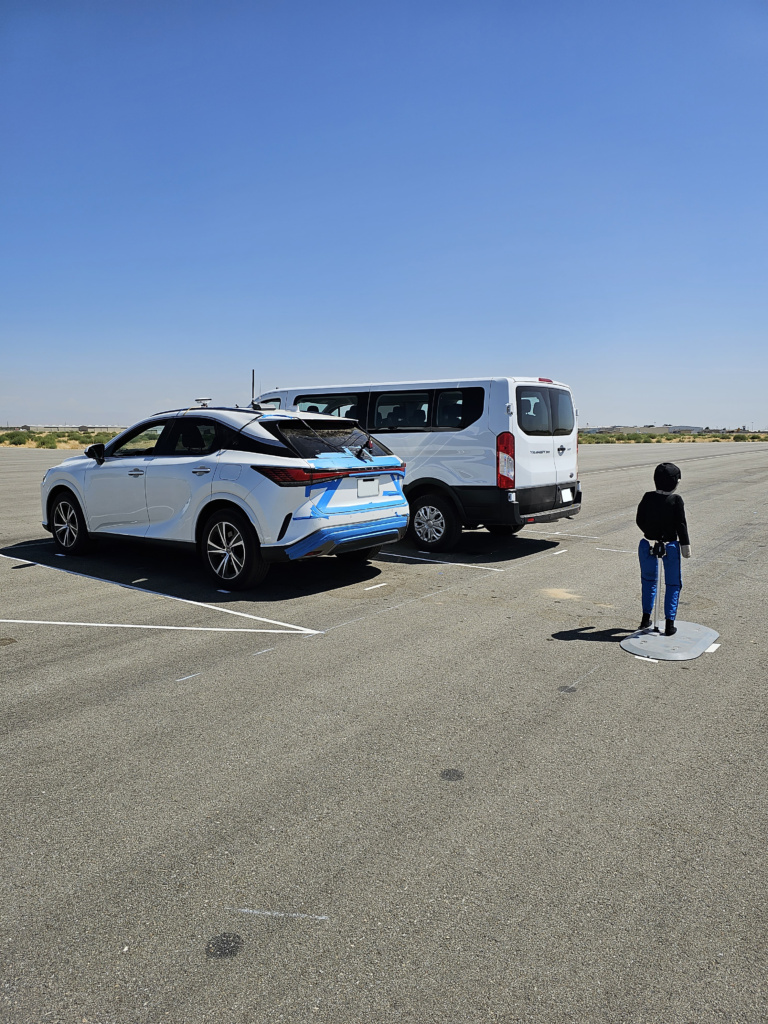BOISE – About 30% of all new vehicles have an available safety feature known as reverse automatic emergency braking (AEB), which can detect a potential collision while backing up and apply the brakes automatically. But according to new AAA research, drivers shouldn’t rely on the technology to prevent a crash.
AAA recently tested four 2023 model-year vehicles equipped with reverse AEB and rear cross traffic mitigation (RCTM) on a closed course. Researchers examined how the systems performed when backing out of a parking space (both perpendicular and angled) with a passing dummy vehicle, and while encountering a stationary dummy “child” behind the car.
When a subject vehicle crossed behind the test vehicle while it was backing up, reverse AEB automatically applied the brakes in 65% of test runs and prevented a collision in 2.5% of them. With a stationary child dummy behind the vehicles, the brakes were automatically applied in 75% of test runs and prevented a collision half of the time.
According to the Idaho Transportation Department, “improper backing” was a contributing factor in 385, or 2%, of all multi-vehicle crashes in the Gem State in 2022.
“As with other advanced driver assistance systems, the reverse automatic emergency braking feature is a helpful second set of eyes, but it isn’t ready to be the first,” says AAA Idaho public affairs director Matthew Conde. “Someday, these systems may take over many driving duties, but for now, humans still need to take charge behind the wheel.”
AAA urges automobile manufacturers to continue to improve these systems to reach their full potential of zero crashes, injuries, and deaths.
AAA driving tips
- Never rely on reverse AEB systems to prevent collisions while backing up. Be fully aware of your surroundings and use the technology to double-check your own observations.
- Back out slowly, especially if an object or vehicle obscures your view. This allows sensors more time to “see” a potential collision and prevent or reduce damage. If you have any reason to think children may be behind your car, walk around it before backing out.
- Make sure systems are working properly and are serviced by experienced technicians.
“What you learned in driver’s ed still rings true – backing up slowly helps you see the road and helps others see you,” Conde said. “With a consistent safety mindset, we can protect all road users, including our most vulnerable.”
When it’s time for maintenance or repairs, including replacement or re-calibration of ADAS systems, drivers should take their vehicle to a trusted repair shop, such as a AAA Approved Auto Repair facility. Conde recommends having the shop perform a basic job first, such as an oil change or a tire rotation, to establish a rapport and to ensure good customer service before committing to larger repair projects.
AAA testing was completed at the Automobile Club of Southern California’s Automotive Research Center. Test vehicles were checked to ensure that systems were functioning according to manufacturer specifications before test runs were completed.
AAA also calls on auto manufacturers to standardize testing of all ADAS equipment, including reverse automatic emergency braking, to produce meaningful comparisons that can be applied across the industry and a variety of real-world scenarios.
“Every step toward preventing a tragedy is a step in the right direction,” Conde said. “We want drivers to have a realistic expectation of how these safety systems will perform, but we’re also very optimistic that they will become even more effective over time.”
Testing B-roll can be found here: https://youtu.be/fTuIis9RaMQ and https://youtu.be/nDFIlUh9qvw





